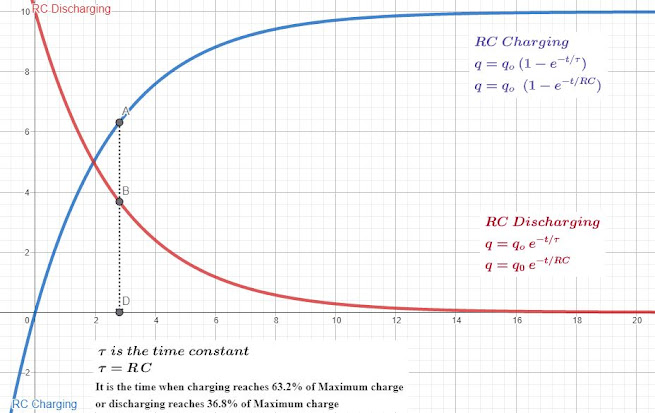trial chatgpt codes
\[ \frac{F_{\text{electric}}}{F_{\text{gravity}}}\]
In carbon monoxide molecule, the carbon and the oxygen atoms are separated by a distance 1.12 × $10^{−10}$m. The distance of the centre of mass, from the carbon atom is
In carbon monoxide molecule, the carbon and the oxygen atoms are separated by a distance 1.12 × 10−10 m. The distance of the centre of mass, from the carbon atom is
(a) $0.64 × 10^{−10} m$
(b) $0.56 × 10^{−10} m$
(c) $0.51 × 10^{−10} m$
(d) $0.48 × 10^{−10} m$
[NEET 1997]
\[M\; r_{cm}=m_1 \; r_1 + m_2 \; r_2\]
\[\left (12u+16u \right) \; x = 12u \; (0) + 16u \left (1.12\times 10^{-10}\right)\]
\[x=0.64 \times 10^{-10}m\]
12P07B RL RC Charging Discharging Transient Currents
Preeti reached the metro station and found that the escalator was not working. She walked up the stationary escalator in time t1. On other days, if she remains stationary on the moving escalator. then the escalator takes her up in time t2. The time taken by her to walk up on the moving escalator will be:
Problem 7. Preeti reached the metro station and found that the escalator was not working. She walked up the stationary escalator in time t1. On other days, if she remains stationary on the moving escalator. then the escalator takes her up in time t2. The time taken by her to walk up on the moving escalator will be: [NEET 2017]
(a) t1t2
t2−t1
(b) t1t2
t2+t1
(c) t1 − t2
(d) t1+t2
2
A particle covers half of its total distance with speed $v_1$ and the rest half distance with speed $v_2$. Its average speed during the complete journey is
Problem 6. A particle covers half of its total distance with speed $v_1$ and the rest half distance with speed $v_2$. Its average speed during the complete journey is [NEET 2011M]
(a) $\frac {v_1 v_2}{v_1 + v_2}$
(b) $\frac {2 v_1 v_2}{v_1 + v_2}$
(c) $\frac {2 v_1^2 v_2^2}{v_1^2 + v_2^2}$
(d) $\frac {v_1 + v_2}{2}$
\[Avg. Speed = \frac {Total \; distance}{Total \; time}\]
\[ = \frac {\frac{d}{2} + \frac {d}{2}}{\frac{d/2}{v_1}+\frac{d/2}{v_2}}\]
\[=\frac{2 v_1 v_2}{v_1+v_2}\]
A car moves from X to Y with a uniform speed $v_u$ and returns to Y with a uniform speed $v_d$. The average speed for this round trip is
Problem 5. A car moves from X to Y with a uniform speed $v_u$ and returns to Y with a uniform speed $v_d$. The average speed for this round trip is [NEET 2007]
(a) $\sqrt{v_u v_d}$
(b) $\frac{v_d v_u}{v_d + v_u}$
(c) $\frac{v_d + v_u}{2}$
(d) $\frac{2 v_d v_u}{v_d + v_u}$





